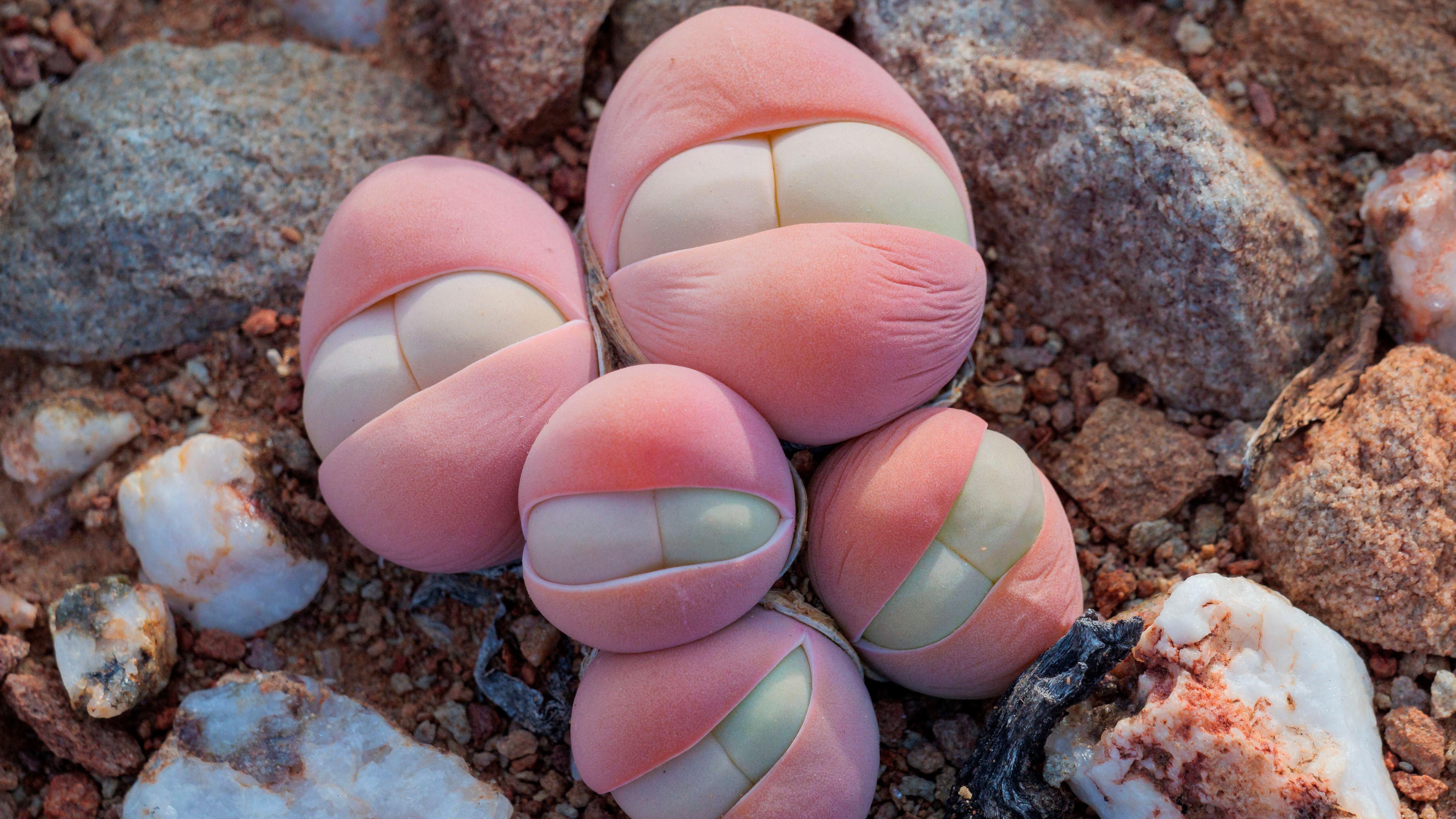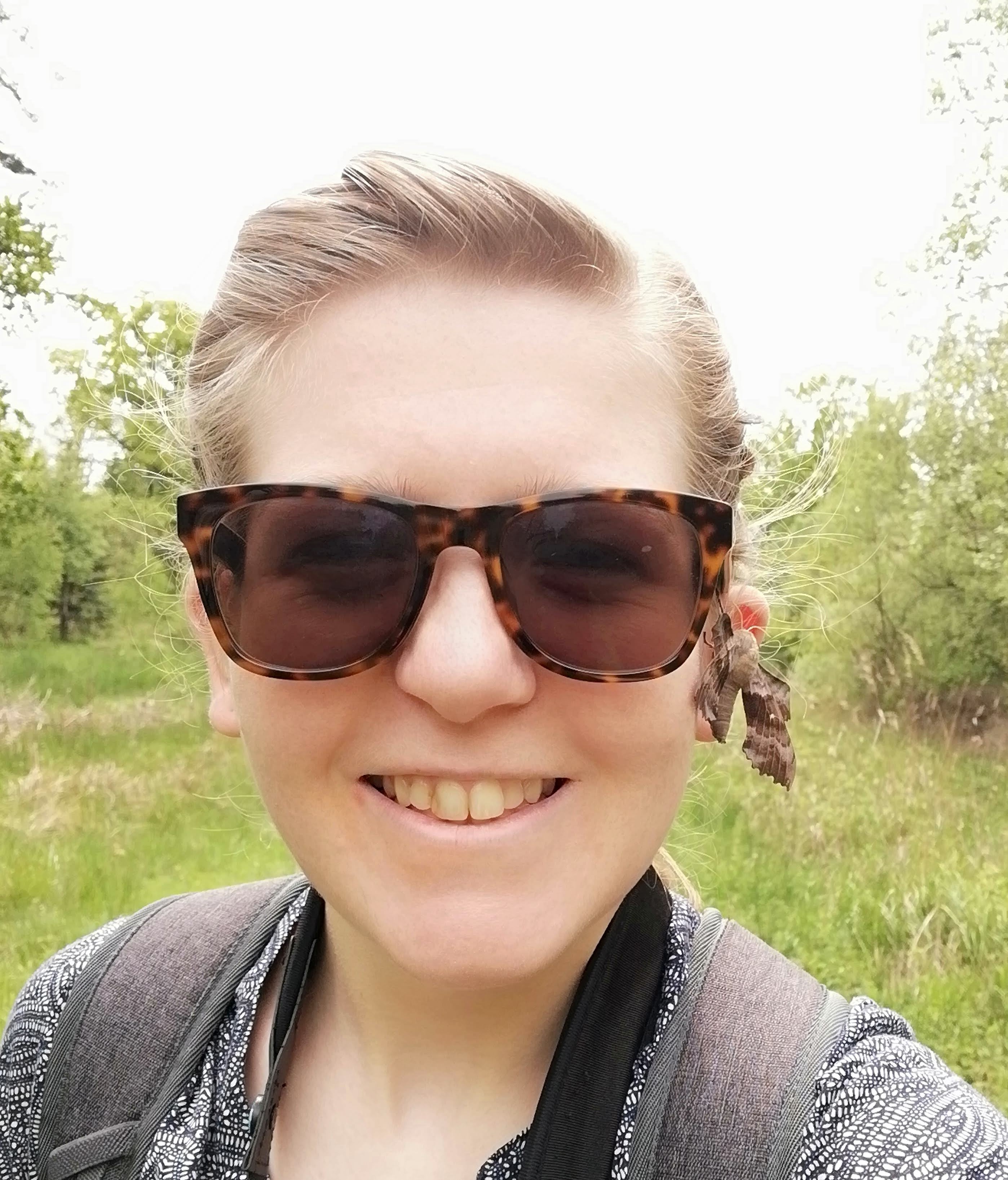This bizarre little succulent looks like a baby's butt
Gibbaeum heathii is endemic to a valley in South Africa that is surrounded by mountains and receives very little rainfall, allowing a huge range of succulent species to thrive. This bababoutjies — or baby's bum — is one of them.

A small succulent that grows in a huge valley surrounded by mountains in South Africa is often the butt of people's jokes. But why is this cheeky little plant, standing just 2.4 inches (6 centimeters) high, so amusing? A clue might be in its name: bababoutjies — which translates to baby's bum.
Baby’s bum (Gibbaeum heathii) is a clump-forming succulent that grows two to three smooth globe-shaped leaves, with older leaves protecting the new growth, persisting at the base and covering the stems. Flowers grow through the center in late winter and early spring, with colors varying from white and pink to yellow.
The plant leaves are usually gray-green in color, but when new leaves come through, the older ones can turn pink under certain conditions, making it look even more like a baby's bottom.
"Many succulents do change colour from green to reddish and it is usually a response to stress by either water and or light," Paul Rees, the nursery manager at the Royal Botanic Gardens, Kew, in London, told Live Science. "If plants receive too much light, they redden to help protect them from sunburn. Also, if there is a lack of water for a sustained period of time, they can redden to help them cope with water stress."
Related: Otherworldly 'fairy lantern' plant, presumed extinct, emerges from forest floor in Japan
Gibbaeum heathii are endemic to the Klein Karoo in South Africa's Western Cape province, where they grow in between quartzitic stones, which reflect heat, creating a cooler climate for the plants, according to the South African National Biodiversity Institute.
The Klein (or Little) Karoo is a 25 to 37-mile-wide (40 to 60 kilometers) valley that's 217 miles (350 km) long. It is surrounded by mountains and, as a result, has little annual rainfall.
Sign up for the Live Science daily newsletter now
Get the world’s most fascinating discoveries delivered straight to your inbox.
According to the Botanical Society of South Africa, Klein Karoo forms part of the country's Succulent Karoo Biome — one of the richest and most diverse succulent habitats on Earth. An estimated 3,200 plant species are found in the Klein Karoo, 400 of which are found nowhere else on the planet.
Many of these species are under threat from illegal collection for the horticultural trade, overgrazing from livestock and climate change. The region is expected to experience increased drought over the next century, which researchers studying the impact say could have "dire consequences" for the plants in this biodiversity hotspot.

Megan Shersby is a naturalist, wildlife writer and content creator. After graduating from Aberystwyth University with a BSc (Hons) degree in Animal Science, she has worked in nature communications and the conservation sector for a variety of organisations and charities, including BBC Wildlife magazine, the National Trust, two of the Wildlife Trusts and the Field Studies Council. She has bylines in the Seasons anthologies published by the Wildlife Trusts, Into The Red published by the BTO, and has written for the BBC Countryfile magazine and website, and produced podcast episodes for its award-winning podcast, The Plodcast.










